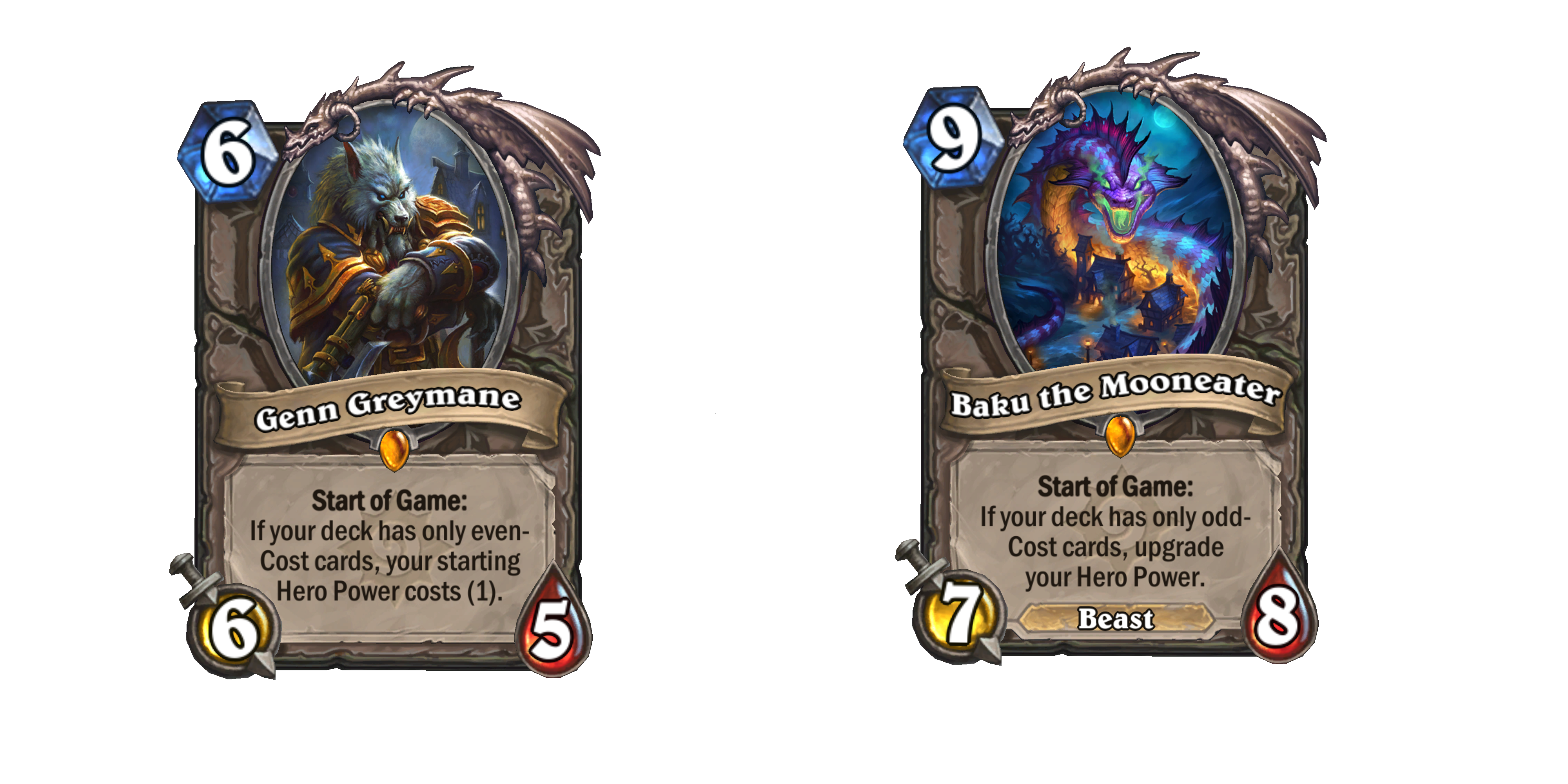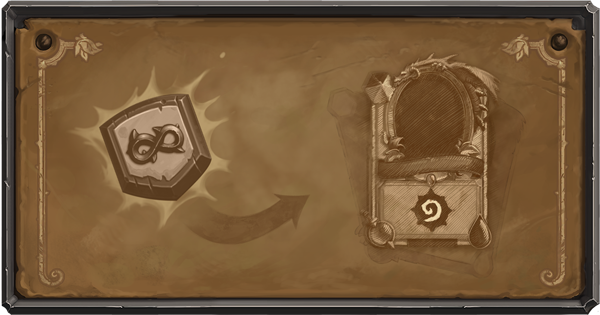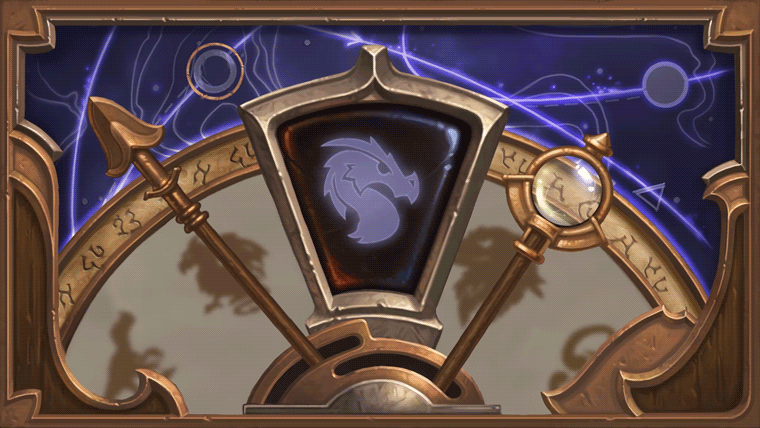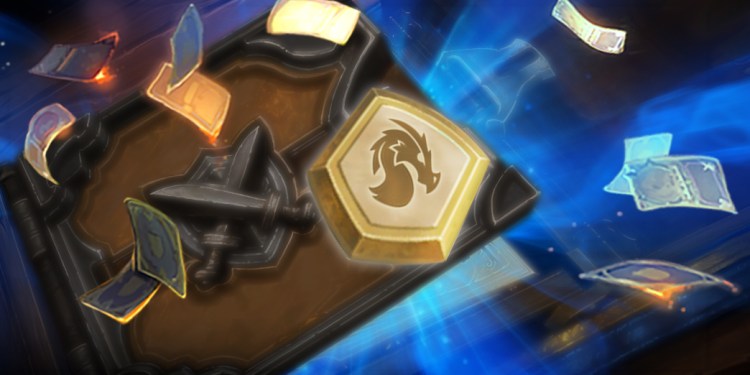The Year of the Dragon kicks off in April for Hearthstone, Blizzard Entertainment’s mammoth digital card game. It’s the top dog in the market, which research firm Newzoo estimated would be worth $2 billion by 2020. It’s entering its fifth year, and come April, it’ll send three sets of cards out of its Standard format … and make some in-game history while doing so.
Hearthstone is saying goodbye to more than the Year of the Mammoth when Journey to Un’Goro, Knights of the Frozen Throne, and Kobolds & Catacombs rotate out and usher in the Year of the Dragon. The world’s most dominant digital card game is also making a number of quality of life improvements — including sending cards from a Standard set into Wild for the first time since Blizzard introduced the format in 2016. It’ll also tell a single storyline over its next three expansions, something its designers have never done before. And it’s making changes to how its single-player solo adventures work.
But for now, the biggest news might be that two polarizing cards — Genn Greymane and Baku the Mooneater, which ushered in Even and Odd decks with 2018’s The Witchwood expansion — are going to the Hall of Fame.
All of these changes appear to be with making the playing experience better for most Hearthstone players. And that’s important to keep the millions who play Hearthstone engaged, buying card packs and other content, and showing that, as it turns 5 years old, Hearthstone is ready to face the challenge from Magic: The Gathering — Arena and other card games in this multibillion dollar market.
June 5th: The AI Audit in NYC
Join us next week in NYC to engage with top executive leaders, delving into strategies for auditing AI models to ensure fairness, optimal performance, and ethical compliance across diverse organizations. Secure your attendance for this exclusive invite-only event.
Hall of Fame

Above: It’s going to be a Wild year for these two.
This year’s Hall of Fame honorees include a trio that are consistent pieces of some of the top decks in Hearthstone’s five-year history — and Genn and Baku, two of the most polarizing cards that Blizzard has ever made. Genn and Baku have enabled oppressive decks because of how their strengths — upgraded hero powers — make up for what at first appeared to be a weakness, lineups made from either odd or even mana cost cards.
- Doomguard
- Naturalize
- Divine Favor
- Genn Greymane
- Baku the Mooneater
- All Odd/Even cards (Black Cat, Gloom Stag, Glitter Moth, and Murkspark Eel)
As of publication, Hearthstone tracking site HSReplay has two Genn and Baku decks in Tier 1: Odd Paladin and Even Paladin. Secret Odd Mage is top Tier 2, ahead off two types of Odd Warrior, Even Warlock and plain-ol’ vanilla Odd Mage. Odd Hunter leads Tier 3. HSReplay doesn’t track every Hearthstone player — just those who use it tools — but the community finds it to be one of the best sources of deck tracking, since Blizzard doesn’t release tier lists it gathers from its internal tools.
In Wild, the esports organization Tempo Storm puts out a meta report that has Even Warlock and Even Shaman in the top tier, with Odd Warrior and Odd Rogue in Tier 2 and Even Paladin in Tier 4. Again, like HSReplay, Tempo Storm doesn’t track every player — its meta report comes from a combination of analytics/tracking tools and the opinions/experiences of its contributing experts.
My concern here is that Genn and Baku will continue to help shape the Wild meta unchecked, and people who enjoy these decks in Standard may come into the format and further twist the landscape. In the last round of card adjustments, Blizzard changed Flametongue Totem (a 0/3 minion that gives each creature next to it +2 attack) from 2 mana to 3 mana, and this was in part to see if this could blunt Even Shaman’s power in Wild. The change did not.
Creative director Ben Thompson and lead game designer Mike Donais said that the design team will be keeping an eye on Even/Wild decks in Wild. I asked if they’d consider creating more cards that target Genn and Baku, such as a minion or spell that removes the hero power buff that comes with these decks.

“There’s already two cards that work against hero powers [Mindbreaker and Saboteur], and as time goes on, we will make more that target these kinds of cards specifically,” Donais said.
Doomguard has been a mainstay of Warlock decks for years. It’s a strong minion at 5 mana, with 5 attack and 7 health, but it does have a cost — you discard two cards when playing it. However, this drawback never kept it from finding use. It’s a core component of the Cubelock archetype, which dominated for a period in 2018.
Divine Favor is a 3 mana Paladin spell that’s key to Odd Paladin and any aggressive strategy for the class. It enables the player to match the hand size of their opponent. That’s great if you’re belching out cheap card after card, especially if you’re facing a control-style or combo deck that hold a lot of cards.
Druid’s Naturalize is a card that sees play depending on the meta (it’s a good card in Arena). It’s a 1 mana card that destroys a minion, enabling the foe to draw two cards. It’s going to the Hall of Fame for a couple of reasons. First, Hearthstone creative director Ben Thompson said the design team feels that Druid shouldn’t have hard removal — cards that when played destroy another creature. It also ended up finding a home in decks in which a player would destroy one of their own cards to reap its beneficial deathrattle (something that happens when a creature dies), like with Mecha’thun (which when it dies wins the game if you have no cards left in hand and your deck).
Naturalize “did not feel like a Druid thing, in terms of what is a vibe like to play Druid. Removal felt more like a Rogue thing,” Hearthstone creative director Ben Thompson said. “When you look at Rogue, you have — opportunities abound for removal, direct removal, whereas Druid felt like not necessarily the class that should be celebrated in.”
Single-player improvements
The Year of the Dragon’s first expansion hits in April, with its single-player adventure coming in May. This will come with a number of improvements, addressing some of the player complaints from previous expansions (including those from Rastakhan’s Rumble).
It’ll still be a mode in which you build a deck and take on a series of challenges. It’ll be split into five chapters, telling a story along the way. The first is free, starring a past character with ties to mages, while the other four will cost either 700 gold apiece or $20 total. And it’ll offer more replayability, as you’ll be able to choose one of four starter decks (three with themes along with a random deck) and three hero powers. Rewards will include dust, gold, golden cards, card backs, and card packs (including golden packs). You’ll also be able to track your progress better as well.
During the last standard year, single-player had been free. That’s changing this year, and I asked if this change had anything to do with Activision Blizzard’s last earnings report, in which it announced a layoff of nearly 8 percent of the company despite CEO Bobby Kotick saying that “our financial results for 2018 were the best in our history.”
“No, actually,” Thompson said. “The focus there being more around the idea that this experience is so much more deep and so much more value there from the perspective of all the different things we’ve added to that mode. … You have what feels like a Freeze Mage. You have a Fire Mage. You have this more spell-powered Mage, when you consider that the second hero power changes the cost of spells in your hand. Things like that make it a multi-splendored way to play this specific one deck. And then once you start unlocking the next location after that, carrying these heroes across their own chapters where you first unlock them and into each others, and exploring their own loadouts, which make them feel significantly different as well, is really more a testament to just how many variables and how deep this experience is.”
I asked again if this was a way to increase spending from players, and Thompson said, “No, it’s not focused on that at all.”
I played it during an event near Blizzard headquarters in Irvine, California, this week. But that’s embargoed until a later date. I can say that after nearly testing it for about 6 hours, I didn’t get bored. The deck construction options — choosing from three hero powers and deck archetypes — made it more enjoyable and engaging. I stopped playing Rastakhan’s Rumble after a couple of weeks because it felt just like Dungeon Runs and Monster Hunt (I just completed my first 8-win run Wednesday, re-energized after playing this).
I wasn’t the only one who didn’t care for the single-player mode in Rumble, and Thompson notes how the community feedback played a part in these changes.
“I hope they do see we looked at Rastakhan’s Rumble and the feedback that they gave us about that as where things like the extra rewards, inherent rewards, within each chapter come from. Certainly that’s where tracking came from as well, this response to — why isn’t there some way to follow along which shrines I picked and which ones I won with, or which heroes or which class specifically I won with when it came down to Rikkar picking a specific class?” Thompson said. “All of those responses and that feedback absolutely played into a lot of the changes that we made in this mode, in ways we believe made this better. We really appreciated the feedback from the community.”

I asked if it was important that the players think that all these changes just didn’t come in response to their Rumble criticism, that some of these things were in development before Rastakhan came out.
“I don’t know how important it is for players to know we were working on it for more than a year. As long as the content we are making is compelling, engaging, brings a smile to people’s faces — and yes, I do hope it resembles or shows that we’re listening to players when it comes to the feedback they have from these previous experiences,” Thompson said. “If we’re going to see them as learning opportunities, then we need to treat them as such. We need to see the parts where players were really engaged and felt very excited, and also the parts that they felt could use some work.”
“As we head into 2019, we really are doubling our commitment to talk more with the community and engage them more in these kinds of decisions as they’re made. Really ask and solicit for their feedback,” Thompson added.
One of my favorite aspects of this was stumbling across what I felt could be a new way to play — Heal Druid. It worked well, and it felt good playing it. And it felt like something new, something I’ve never done before in Hearthstone. And that itself is an accomplishment after nearly five years of Hearthstone.
Better AI deckbuilder
Back when Hearthstone launched, I loved to play against friends with random decks. And they were true random decks — the builder would just throw 30 cards from your collection together. In 2016, Hearthstone introduced Deck Recipes, which are prebuilt decks you can craft. If you don’t have the cards, Hearthstone’s AI will suggest replacements.
It … wasn’t that good.
The new deckbuilder will still have recipes, but it’ll suggest cards that fit the current metagame. But you’ll also be able to make a deck of 1, 2, up to 29 cards and get recommendations from this new AI.
Random cardback generator

Above: Yes, I’m excited for this Random cardback to appear.
I have 79 cardbacks in my collection, and Hearthstone offers a couple dozen more that I don’t have. But it’s a pain to change cardbacks. I tend to just use the same one for each deck. Hearthstone does so you can choose a specific cardback for each deck.
With the Year of the Dragon, Hearthstone is introducing a random cardback that, well, assigns a random cardback for each match. Lead designer Mike Donais said this will appear “from time to time” as well. I’m looking forward to playing each match with a different cardback. It’s a small thing, but such quality-of-life improvements do make a difference to some players. I’ll also get a kick out of seeing different cardbacks each match.
Arena: Seasons and Golden Heroes
The Year of the Dragon will see a shake up in Arena. It’s getting seasons, two-month blocks that will alternate between Standard and Wild (with the latest set of cards always in the rotation). This is subject to change, Blizzard said. So when this goes live, it’ll start with an Arena season with two months of Standard, and then it’ll rotate with two months of Wild sets plus the next expansion.
The idea here is to offer more variety to Arena players, as the mode can get stale between card changes and micro-adjustments to the offering buckets.
“I do believe the point there is to keep switching up the meta within Arena in a way that draws from old cards, but also new ones as well from time to time,” Thompson said. “It doesn’t create a stagnant Arena meta. Some of this came from Tavern Brawls recently that a lot of people will point to and say, ‘We did something similar in Tavern Brawls. Is this a part of that?’ Yeah, I think there were some learnings pulled from the tavern brawl. We found there were a lot of fun and interesting moments that happened when we did that. We do think there’s value in making Arena feel fresh and new and different from time to time, rather than letting it stay in a general gray area for so long.”
I asked if Arena players could expect other changes in Year of the Dragon.
“Possibly? I don’t think the design team even 100 percent knows yet,” Thompson said. “We’re very interested to see what player reaction is to this. We hope that the players let us know what they think of it and provide feedback for it. We think there’s a lot of fun here, just from the ever-changing side of it, but as we know more about what players find engaging and exciting and what maybe just elicits a shrug, then we’ll know what the next steps are.”
One quality-of-live improvement coming to Arena involves Golden Heroes. Right now, wins don’t count toward the 500 you need to earn a Golden Hero. But that will soon be changing. Players who focus on Arena may never play enough games in the other modes to earn progress toward these glittering portraits, so this will be a welcome change for them.


